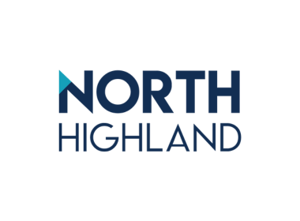Execute Your Strategies Across the Organization
Strategic Portfolio Management and Adaptive Project Management work hand-in-hand to deliver next-level processes. Learn how Adaptive Project Management fits into the landscape of effective and efficient delivery.What is Adaptive Project Management?
Adaptive Project Management and the associated reporting capabilities allow organizations to manage and track the work that is defined and approved by Strategic Portfolio Management through all elements of the tri-modal delivery reality. Adaptive Project Management begins with capturing and prioritizing demand, continues through the planning and execution of work, and is completed through effective closeout of all work activities. It must be noted that while Adaptive Project Management is critical to successful delivery, as Gartner points out, it lacks the strategic elements and must always be viewed as a partner to Strategic Portfolio Management. Adaptive Project Management should not exist in isolation, but rather in conjunction with Strategic Portfolio Management, which provides the strategic element and Adaptive Project Management focuses on execution and delivery.
Importance of Adaptive Project Management
Organizations today cannot deliver work using just one approach. They must embrace traditional, agile and hybrid ways of working if they are going to consistently deliver solutions that achieve the expected value targets. They must also support multiple delivery methods – digital products, applications and assets, products and services, programs, and projects.
At the same time, organizations must use tools to capture and prioritize demand from multiple sources without slowing down the throughput of that work to execution teams and while ensuring that the right work is always being undertaken. And all that work must be reported on accurately, completely and with the right context for each stakeholder. That’s what Adaptive Project Management delivers.
6 Key Elements of Adaptive Project Management
Because Adaptive Project Management is focused on the execution of work, the elements align closely with the traditional project and work delivery cycles that organizations are familiar with.
1. Demand capture and intake
Adaptive Project Management must provide a single demand funnel that captures all work requests and intakes regardless of the type of work method, solution, or source. This implies alignment with the Integrated IT Portfolio Analysis (IIPA) element of Strategic Portfolio Management. Additionally, because intake must be integrated with the strategic goals and objectives, the Enterprise Project Portfolio Management (EPPM) element of Strategic Portfolio Management must also integrate with demand capture to ensure requirements around governance and bulk funding are considered.
2. Prioritization
Effective organizational performance depends on effective prioritization. Application PM requires a robust prioritization process that can ensure there is a single prioritized list of work items that aligns with enterprise strategic objectives. This is an area where integration with Strategic Portfolio Management is critical and ensures alignment between priorities, funding, and outcomes and that can only occur when work is prioritized appropriately. That prioritization must be able to manage work from multiple sources, delivered in multiple modalities. It must also be able to integrate with the adaptive planning elements of Enterprise Program & Portfolio Management to allow for effective adjustments to priorities when required.
3. Planning
Work carried out as part of Adaptive Project Management is delivered using numerous vehicles – projects, programs, products, etc. and each of the tri-modal realities. That means many different approaches will be used to plan work, but Adaptive Project Management must be able to manage that planning process to understand the overall resource utilization, dependencies, schedules, financial demands, etc. There must be complete clarity regardless of how individual work items are delivered.
4. Execution
The same concepts that apply to planning also impact execution. Adaptive Project Management must be able to monitor and measure performance across multiple ways of working and respond to challenges and opportunities that arise. In addition, they must ensure that changes driven by performance variances or as a result of adaptive planning adjustments are implemented effectively, efficiently and with consideration of all dependencies. This requires integration with other enterprise tools that help manage work in the different modalities, and the automated flow of data between those applications.
5. Closeout
Closeout is an often-overlooked part of the work execution process, but it is critical to ensure that all commitments are completed successfully, that resources are released as expected and that opportunities for improvement are not only captured but integrated with existing work methods. Discretionary investments are becoming ever more critical to organizational success and Adaptive Project Management must ensure the way that those investments are delivered is always evolving to achieve optimal performance.
6. Reporting
Not so much an element of Adaptive Project Management as an overlay for all other elements, it is essential that organizations have accurate, complete, timely and contextualized reporting for all work undertaken as part of Adaptive Project Management. Organizations must ensure that work in all modalities and tracked and measured effectively and that the information can be consolidated to provide a portfolio view of all work. Additionally, reporting must be capable of playing a decision support role for all types of stakeholders to the Adaptive Project Management process – portfolio managers, finance departments, product managers, etc.
Top Challenges
Adaptive Project Management cannot succeed in isolation. In many organizations it represents the only form of portfolio management that is consistently applied, but unless Adaptive Project Management is integrated with Strategic Portfolio Management, organizations are missing the top-down, strategy driven management that is necessary to ensure optimal performance.
Additionally, organizations frequently find that they rely on different tools to handle different work modalities with no ability to integrate the data from those systems. Often that inability stems from a lack of consistent metrics across different ways of working, making it almost impossible to reliably assess performance and make appropriate adjustments.
Strategic Portfolio Management Software
North Highland’s powerful NH360 strategic portfolio management software supports every element from roadmapping to resource management to portfolio analysis. By integrating the software into how you plan, fund, and manage your work, your key people are freed up to focus on strategy execution.





